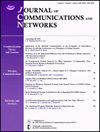用数字量子退火方法求解电动汽车充电站最优布局问题
IF 3.2
3区 计算机科学
Q2 COMPUTER SCIENCE, INFORMATION SYSTEMS
引用次数: 0
摘要
减少二氧化碳排放和化石燃料消耗,确保地球的可持续未来,减轻温室气体造成的极端气候变化等负面影响,势在必行。在这种情况下,电动汽车(ev)发挥着关键作用,充电站的便利性对影响消费者的选择至关重要。本文将充电站的布局作为一个优化问题,考虑充电站密度、可达性、覆盖范围和区域成本变化等因素,以最小化总建设成本。将该问题映射到一个二次型无约束二元优化(QUBO)模型上。QUBO可以有效地表示和求解复杂的组合优化问题,适用于量子和先进的经典算法。利用数字量子退火,有效地识别出最优或近最优解。将该方法与混合线性规划和模拟退火等经典算法的性能进行了比较,证明了数字退火的显著进步。本文章由计算机程序翻译,如有差异,请以英文原文为准。
Solving optimal electric vehicle charging station placement problem using digital quantum annealing
It is imperative to reduce carbon dioxide emissions and fossil fuel consumption to ensure the Earth's sustainable future and mitigate negative impacts like extreme climate changes caused by greenhouse gases. Electric vehicles (EVs) play a pivotal role in this context, where the convenience of charging stations is crucial in influencing consumer choices. This paper formulates the placement of charging stations as an optimization problem, considering factors like station density, accessibility, coverage, and regional cost variations, to minimize total construction costs. The problem is mapped onto a quadratic unconstrained binary optimization (QUBO) model. The QUBO can efficiently represent and solve complex combinatorial optimization problems, making it suitable for quantum and advanced classical algorithms. Utilizing digital quantum annealing, the optimal or near-optimal solutions are efficiently identified. The performance of the proposed approach is compared with classical algorithms, including mixed linear programming and simulated annealing, demonstrating significant advancements of digital annealing.
求助全文
通过发布文献求助,成功后即可免费获取论文全文。
去求助
来源期刊
CiteScore
6.60
自引率
5.60%
发文量
66
审稿时长
14.4 months
期刊介绍:
The JOURNAL OF COMMUNICATIONS AND NETWORKS is published six times per year, and is committed to publishing high-quality papers that advance the state-of-the-art and practical applications of communications and information networks. Theoretical research contributions presenting new techniques, concepts, or analyses, applied contributions reporting on experiences and experiments, and tutorial expositions of permanent reference value are welcome. The subjects covered by this journal include all topics in communication theory and techniques, communication systems, and information networks. COMMUNICATION THEORY AND SYSTEMS WIRELESS COMMUNICATIONS NETWORKS AND SERVICES.

 求助内容:
求助内容: 应助结果提醒方式:
应助结果提醒方式:


